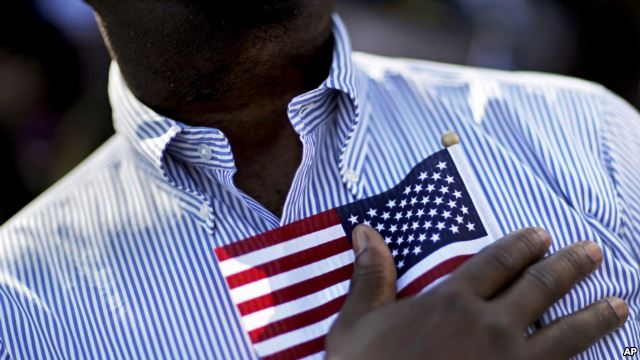The United States is becoming an increasingly attractive destination for African immigrants, with their numbers more than doubling since 2000. Although many are coming from war-torn countries, the immigrants also include large numbers of highly educated professionals.
According to a new study from the Pew Research Center, as of 2015, there were nearly 2.1 million people living in the U.S. who were born in Africa. That number is up from 880,000 in 2000 and only 80,000 in 1970.
Monica Anderson, a research associate and the author of the study, said the numbers are doubling approximately every decade and she sees that trend continuing.
“In 1980 only 1 percent of refugees admitted to the U.S. were from an African country and today that share is about 37 percent. That is one major factor that is driving the growth of African immigrants but it doesn’t tell the entire story,” she told VOA in an interview.
Anderson says various clusters of vibrant immigrant populations are reshaping places like Minnesota, which is home to 25,000 people of Somali origin, about one-fifth of the foreign-born population in the state.
Nigerians make up the largest African diaspora population in the U.S. at 327,000, followed by Ethiopians at 222,000 and Egyptians at 192,000, Pew found. The top destinations for African immigrants to the U.S. are Texas, New York, California and Maryland.

“Many of these places in the U.S. are …having a larger share of African immigrants than they had before,” Anderson said. “In different clusters in the U.S., African immigrants are really reshaping the immigrant population there.”
Still small portion of immigrant population
Despite the increases, African immigrants still make up a relatively low percentage of the total immigrant population. Randy Capps, director of research for U.S. programs at the Migration Policy Institute, said there are both historical and geographic reasons for that.
“It’s a long distance from Africa and the number of people in Africa with sufficient incomes to migrate that far has been relatively small,” he said. “And secondly we didn’t really open up channels for legal African migration to the U.S. substantially until the 1965 Immigration Act and so, like Asian immigrants, there just weren’t very many African immigrants here until starting at that time.”
The Immigration and Nationality Act signed into law by President Lyndon Johnson, ensured that quota systems based on national identity were eliminated and allowed the acceptance of immigrants of all nationalities equally. Immigrant families were able to reunite due to this act, also known as the Hart-Celler Act, and skilled immigrants were encouraged to migrate easily.
Today’s African immigrants include tens of thousands of refugees from Somalia, Sudan, Democratic Republic of the Congo and Eritrea. But it also includes highly-educated doctors, engineers and others immigrating to the country in search of a better life.
Capps said that, as of 2013, 38 percent of sub-Saharan African immigrants had a bachelor’s degree or higher compared to 28 percent of all U.S. immigrants and 30 percent of the U.S.-born population.
Will Trump Stop the Flow?
It remains to be seen how changes in U.S. immigration policy could affect the flow of immigrants from Africa. An executive order signed by President Donald Trump halted immigration from three African countries and paused the U.S. refugee resettlement program.
That executive order was halted by a federal court, but the Trump administration has promised a revision.
Another proposal by U.S. Sen. Tom Cotton, R-Ark., would reduce the number of green cards issued by the U.S. from 1 million to 500,000.
“I see it as more of an open question as to whether fewer students will come, fewer visitors will come, or whether it will be harder for people to sponsor their relatives. I think it’s just too soon into the Trump administration to know if that’s going to be the case,” said Capps.
But barring a major change, African immigration is likely to continue to rise since the U.S. continues to have a strong economy offering opportunities to immigrants.
“The U.S. has a pretty open job market, a strong job market now,” says Capps. “It’s a large job market relative to a lot of other countries that African immigrants might go to and a lot of the African immigrants here are doing quite well. So I think without something more drastic, a bigger change in U.S. immigration policy, there are still going to be very strong pull factors to come to the United States(VOA).”
Photo: A candidate for citizenship holds the American flag at the start of a naturalization ceremony in Atlanta, Sept. 16, 2016.














